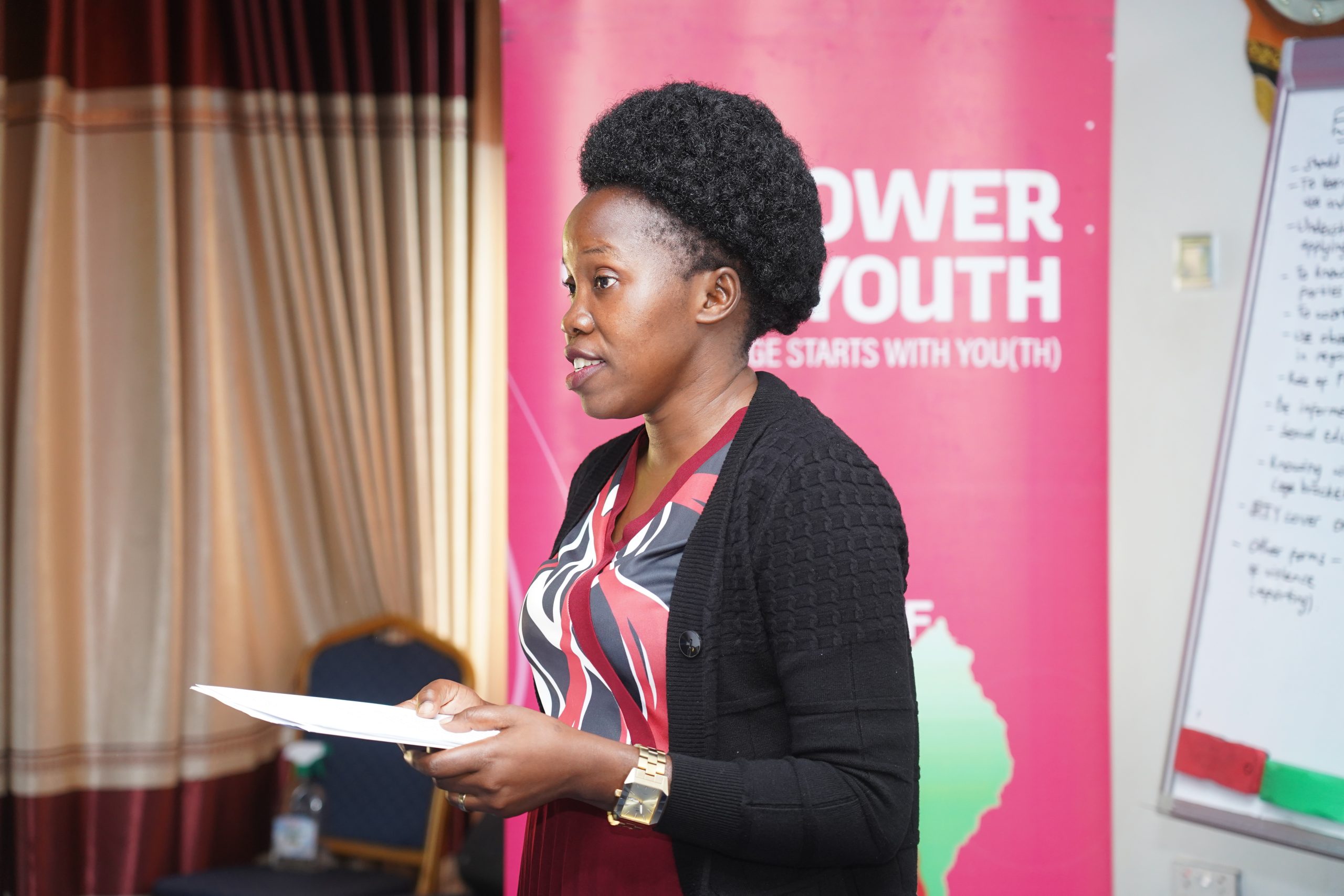Prisca and Clemencia: Clemencia, Malawi. Prisca, program officer/overall coordinator.
SASA = Start Awareness Support Action
Take action now to end gender-based violence
The SASA Model is tailored to raise awareness about gender-based violence, especially violence towards adolescent girls and young women. SASA modules train communities on harmful norms, stigmatising behaviours, and harmful practices to get communities talking about gender-based violence without stigma and norms that impact behaviours that lead to violence. The initiative also provides tools to help identify different power relations that can infringe on girls’ rights. The training module has several steps:
- Phase one is understanding power dynamics at the community/culture level. What are visible/invisible forces at play? What kind of practices has led to the violation?
We have a training manual. We train them all at once for a series of three days. Then, they return to the community. This sets the base for understanding the problem.
- Phase two: awareness. People now understand a little about gender-based violence. Focusing on awareness raising: we can’t do it all at once. We must ignite awareness for all subjects (GBV, pregnancies) amongst community leaders, people in power, and all. Men often don’t come to gatherings, so awareness must be continuous. People are also trained to work with traditional authorities (which have leaders that report to the district), and under that is a youth representative/youth club. Train to do community dialogue sessions, a safe space for people to discuss everything. GTA is used too, and we develop messages. Provide information about the model to young people. We use communication tools to spark discussion, such as pictures like a man hitting a woman with questions on what feelings are on the subject, such as what do you think of that? Linking it to the community/household can impact the country.
- Phase three: the support module. Now communities have begun to understand what the problems are/power imbalances, and we need to come together as service providers, traditional leaders, police officers, etc. Capacity-building and advocacy for specific policies to be in place. Bring the community together to support each other in the fight to end GBV, joining powers with others. Different structures collaborate (for example, girls are harassed in school, and all societal structures must be on the same level of thinking about GBV).
- Phase four: action. This is about power dynamics. Day-to-day action: inspiring people’s households, schools, etc. But they were also using each other’s powers to support each other and understand what forces come with what kind of roles to take precise action. We try to give them an overview of laws and policies, the limit to see how far they can go in their activism, and the ways to manoeuvre under challenging examples (traditional leader as a perpetrator, for example). Some issues cannot be resolved at the conventional level but must go to the police. Understanding the role of everyone.
One of the critical things that the Swahili name is to act now. We are trying to change the mindset etc.
What are the advocacy results of the initiative?
We are now in the support phase. We have increased knowledge avenues that guide the community in dealing with issues like Gender-Based Violence, and victims are now speaking up. Seven cases have now been reported.
Young people’s meaningful engagement and participation have now increased due to community-wide awareness campaigns. Numerous issues of young people have not been addressed, so they started engaging—to create good collaboration among the various community levels. For example, countless young girls have dropped out of school because of teenage pregnancies, but we now see more girls returning to school due to this awareness. Many issues of rape and other forms of sexual harassment have been reported and followed up. One of the towns did not have a police station, so that community eventually got more police attention and is now establishing a unit in the area. Some traditional leaders are now responding positively to the awareness and are ready to act.
Why is this the way to go, and what is your vision?
Prisca: their girls are taking action, fighting for their rights, taking up spaces they never did. If it’s them doing it, change is going to come.
Clemencia: We talk about cases of sexual and gender-based violence towards women and girls. If we’re talking about them, we have to give them a voice because they have the information and in-depth knowledge of their needs.
